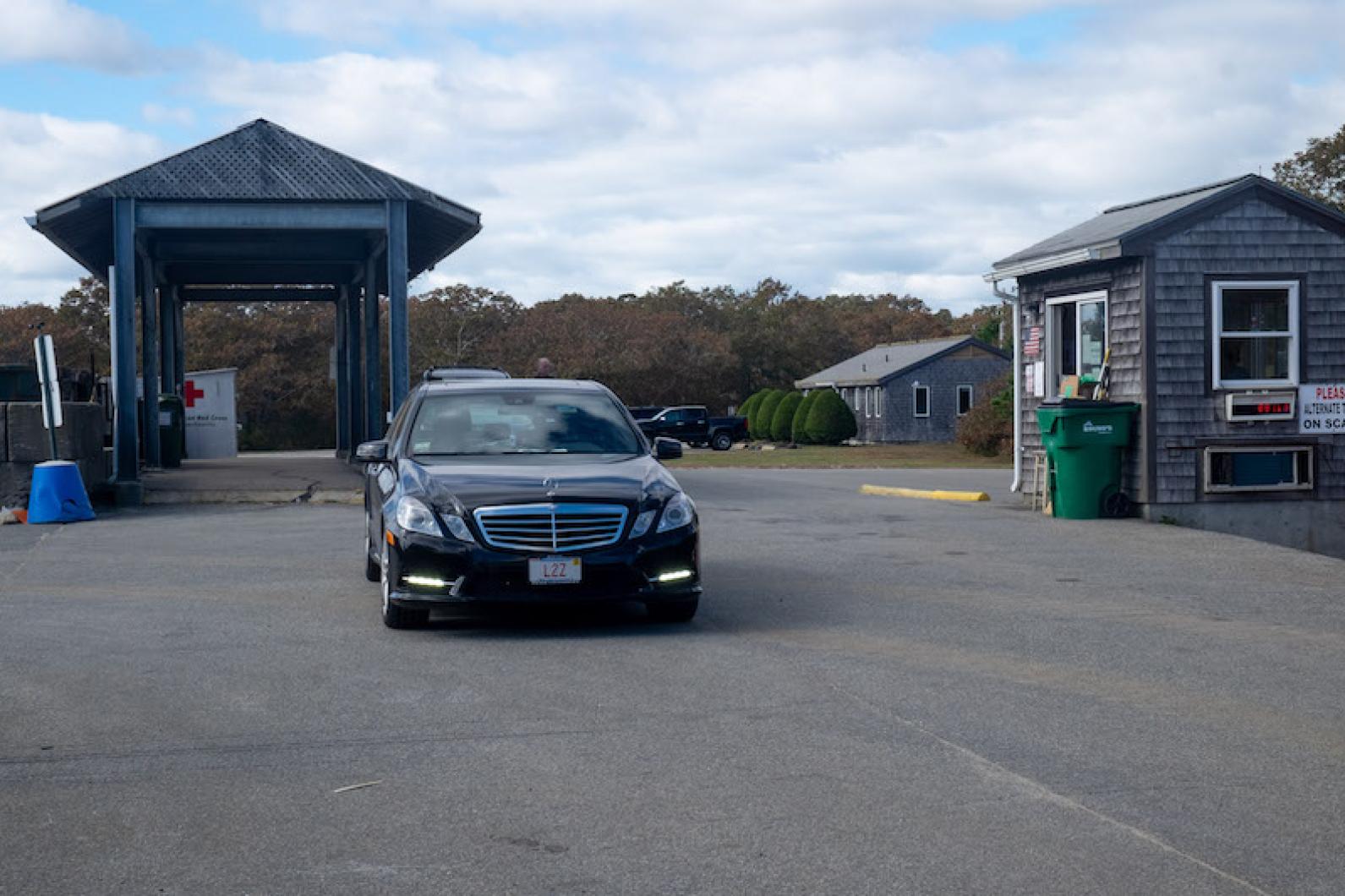The Martha’s Vineyard Refuse District got a green light for a long-sought $2.5 million transfer station reconfiguration and expansion Thursday night, after the Martha’s Vineyard Commission voted unanimously to approve the project.
The approval comes with nearly a dozen conditions, including groundwater monitoring, a landscape plan, a berm for sound and visual mitigation, and a requirement to begin planning a composting facility at the site.
“This improves the Island’s recycling capabilities,” said commissioner Joan Malkin. “And the proposition for a composting facility is a benefit.” Located off of the Edgartown-West Tisbury Road in the outskirts of Edgartown, the refuse district has provided waste management services for Edgartown and the three up-Island towns since 2001. Facility manager Don Hatch said in hearings that the layout and size of the current facility is too constrained to allow for enough flexibility and safety in operations.
The plan calls for reconfiguring the transfer station to separate commercial from residential use through multiple trash staging sites. The expansion will nearly double the footprint of the facility, with 6.5 acres of clearing and an additional three acres of pavement.
At public hearings, abutters living off the Edgartown-West Tisbury Road voiced concerns about noise, odors and unsightliness from the expanded facility, claiming the size of the expansion was unnecessary. But in the end commissioners said they were generally satisfied with the project, and expressed excitement about the potential to incorporate a composting facility for food waste.
The refuse district has been working with the food recovery project begun by Island Grown Initiative to develop a plan that could include an in-vessel composter similar to the one IGI obtained earlier this year.
One condition for the project requires the refuse district to return in a year with an updated timeline and milestones for the composting facility.
Pushback from abutters led to the other conditions. The refuse district will be required to keep 10 shade trees on the southern side of the property, install three groundwater monitoring wells that must be checked semi-annually, and lower the volume of safety vehicles to the minimum required threshold when in reverse.
The district will also be required to build a 12-foot high berm along the southeastern section of the property with a two-foot-thick, six-foot-high block wall on top to attenuate noise. Sound measurement studies must be conducted before and after clear cutting; if the difference in sound is greater than state DEP regulations, the district will have to return to the commission with a revised plan.
Overall however, commissioners decided that the benefits of expanding the Island’s waste management capacity outweighed most of the concerns. There wouldn’t necessarily be more noise, commissioners concluded, just different points of origin. There wouldn’t necessarily be more traffic, just different flow — and more efficient flow at that.
They also concluded that despite the fact that the facility would be getting bigger, the actual boundary lines would not be greatly changed.
“Really, it’s neutral,” commissioner Josh Goldstein said. “It’s not better or worse, it just is.”
The project was approved unanimously, with commissioner Doug Sederholm recusing himself.
The project now returns to the Edgartown planning board for review at the local level.







Comments (2)
Comments
Comment policy »